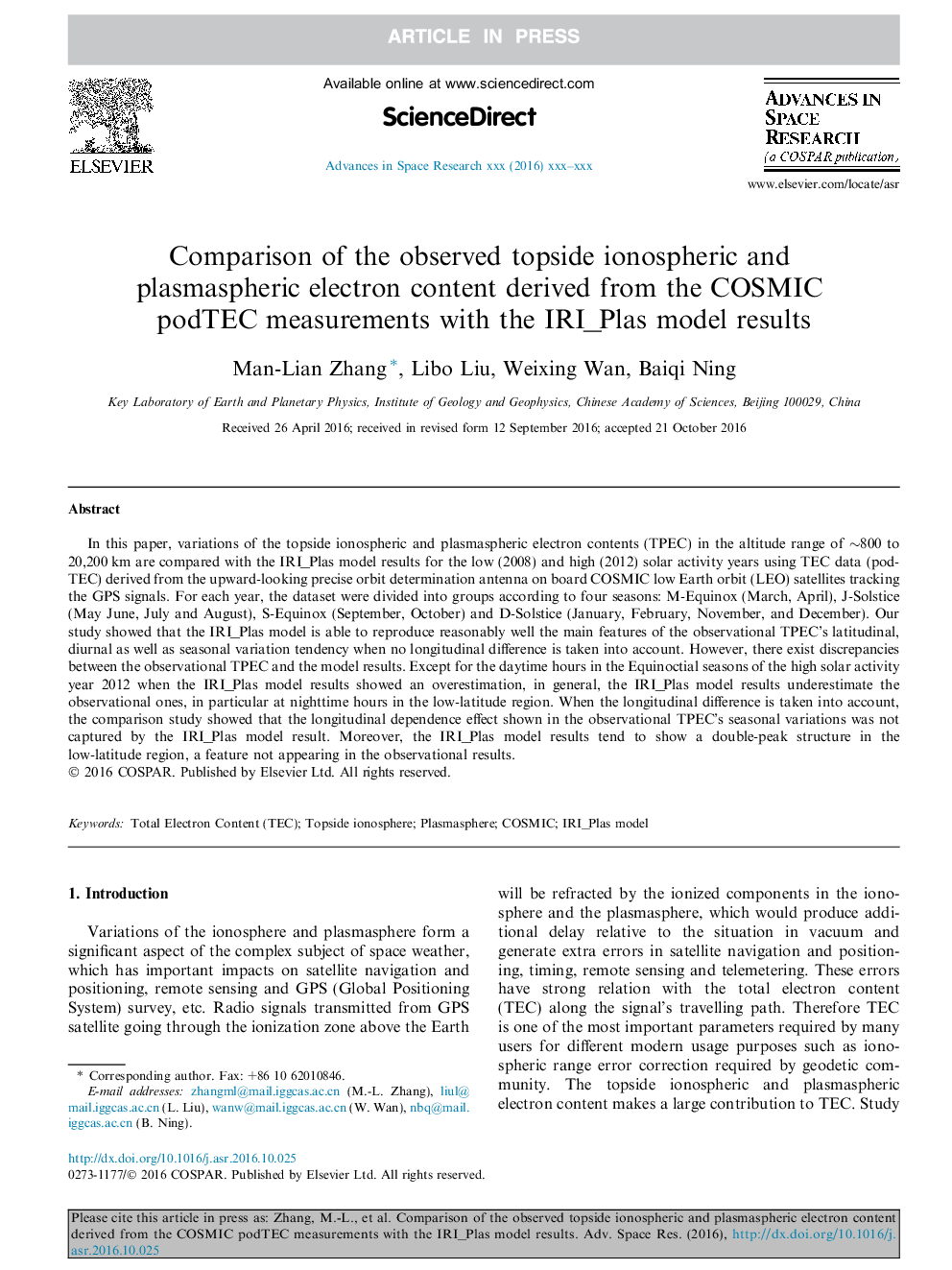| Article ID | Journal | Published Year | Pages | File Type |
|---|---|---|---|---|
| 5486155 | Advances in Space Research | 2017 | 6 Pages |
Abstract
In this paper, variations of the topside ionospheric and plasmaspheric electron contents (TPEC) in the altitude range of â¼800 to 20,200Â km are compared with the IRI_Plas model results for the low (2008) and high (2012) solar activity years using TEC data (podTEC) derived from the upward-looking precise orbit determination antenna on board COSMIC low Earth orbit (LEO) satellites tracking the GPS signals. For each year, the dataset were divided into groups according to four seasons: M-Equinox (March, April), J-Solstice (May June, July and August), S-Equinox (September, October) and D-Solstice (January, February, November, and December). Our study showed that the IRI_Plas model is able to reproduce reasonably well the main features of the observational TPEC's latitudinal, diurnal as well as seasonal variation tendency when no longitudinal difference is taken into account. However, there exist discrepancies between the observational TPEC and the model results. Except for the daytime hours in the Equinoctial seasons of the high solar activity year 2012 when the IRI_Plas model results showed an overestimation, in general, the IRI_Plas model results underestimate the observational ones, in particular at nighttime hours in the low-latitude region. When the longitudinal difference is taken into account, the comparison study showed that the longitudinal dependence effect shown in the observational TPEC's seasonal variations was not captured by the IRI_Plas model result. Moreover, the IRI_Plas model results tend to show a double-peak structure in the low-latitude region, a feature not appearing in the observational results.
Related Topics
Physical Sciences and Engineering
Earth and Planetary Sciences
Space and Planetary Science
Authors
Man-Lian Zhang, Libo Liu, Weixing Wan, Baiqi Ning,
